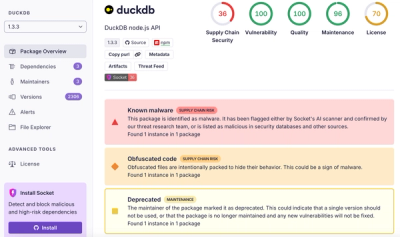
Product
Introducing Tier 1 Reachability: Precision CVE Triage for Enterprise Teams
Socket’s new Tier 1 Reachability filters out up to 80% of irrelevant CVEs, so security teams can focus on the vulnerabilities that matter.
Prose editor for the Django admin based on ProseMirror and Tiptap. Announcement blog post <https://406.ch/writing/django-prose-editor-prose-editing-component-for-the-django-admin/>__.
After installing the package (using pip install django-prose-editor[sanitize]) the following should get you started:
.. code-block:: python
from django_prose_editor.fields import ProseEditorField
content = ProseEditorField(
extensions={
"Bold": True,
"Italic": True,
"BulletList": True,
"Link": True,
},
sanitize=True, # Server side sanitization is strongly recommended.
)
Check the documentation <https://django-prose-editor.readthedocs.io>__.
FAQs
Prose editor for the Django admin based on ProseMirror
We found that django-prose-editor demonstrated a healthy version release cadence and project activity because the last version was released less than a year ago. It has 1 open source maintainer collaborating on the project.
Did you know?

Socket for GitHub automatically highlights issues in each pull request and monitors the health of all your open source dependencies. Discover the contents of your packages and block harmful activity before you install or update your dependencies.

Product
Socket’s new Tier 1 Reachability filters out up to 80% of irrelevant CVEs, so security teams can focus on the vulnerabilities that matter.

Research
/Security News
Ongoing npm supply chain attack spreads to DuckDB: multiple packages compromised with the same wallet-drainer malware.

Security News
The MCP Steering Committee has launched the official MCP Registry in preview, a central hub for discovering and publishing MCP servers.